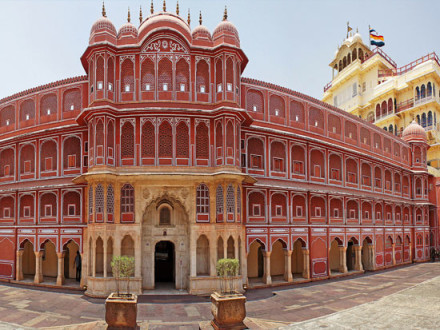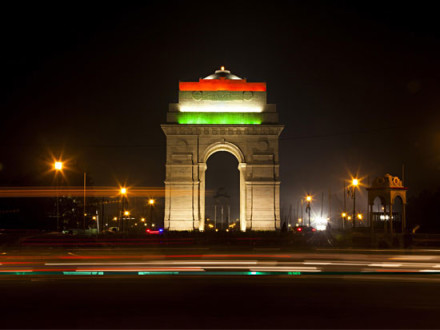Located in Delhi, The iron Pillar is a seven meter tall column within the Qutb Complex. What makes the Iron pillar worth visiting is its rust resistant composition. The mix of metals used to raise this pillar has stood the ravages of time and the iron pillar till date stands without any damage or rust.
The iron pillar has been called a “testament to the skill of ancient Indian blacksmiths”. The pillar has high corrosion resistance which is because of an even layer of crystalline iron hydrogen phosphate forming. The pillar has withstood the varying impact of Delhi weather conditions on the pillar.
The Iron Pillars weight is estimated to be more than 6 tons. In the early days there was a popular belief that if you rested your back on the pillar and tried to hold it with both your hand and if your hand met than all your wishes would come true. However this belief led to substantial amount of wear and tear, dis-coloration on the lower side of the pillar. Hence the respective authorities erected a fence around the pillar to prevent further damage to the pillar.
Positioning of the Iron Pillar
The original positioning of the pillar has also attracted several debates by scholars, archaeologists and historians. Despite all the theories, stories and explanations the Pillar was believed to be erected at its current spot by Iltutmish who took the pillar from Vidisha as a trophy after defeating them in thirteenth century. The iron pillar was brought to Delhi in the 1300’s.
Renowned IITian R.Balasubramaniam explained that the pillar was corrosion resistant because of three factors- a passive protective film at the iron rust interface, a second phase particle slag and unreduced iron oxides in the micro structure of the iron with high amounts of phosphorous in the metal and the alternating wetting and drying under varying atmospheric conditions.
According to Balasubramaniam the iron pillar is “a living testimony to the skill of metallurgists of ancient India”. In 2009 there are studies that state that little corrosion has appeared on the iron pillar due to immense change in climatic conditions and that the rusting has happened evenly on the surface of the pillar.
During the 1920’s there were claims that an iron pillar similar to the one that Iltutumish brought to Delhi was manufactured in Mirjati near Jamshedpur but the claim was falsified by the National metallurgical laboratory.
The iron pillar of Delhi has been a subject of several debates starting from how it landed in Delhi, its original placement prior to its current location within the Qutb complex, contemplations that ruling Tomar king Vigraha Raja installed the Iron pillar at its current location so on and so forth. Leaving aside the arguments and debates the fact remains in the astonishing aspect that the Iron Pillar has stood the savagery of time and continues to be a monument worth visiting.




